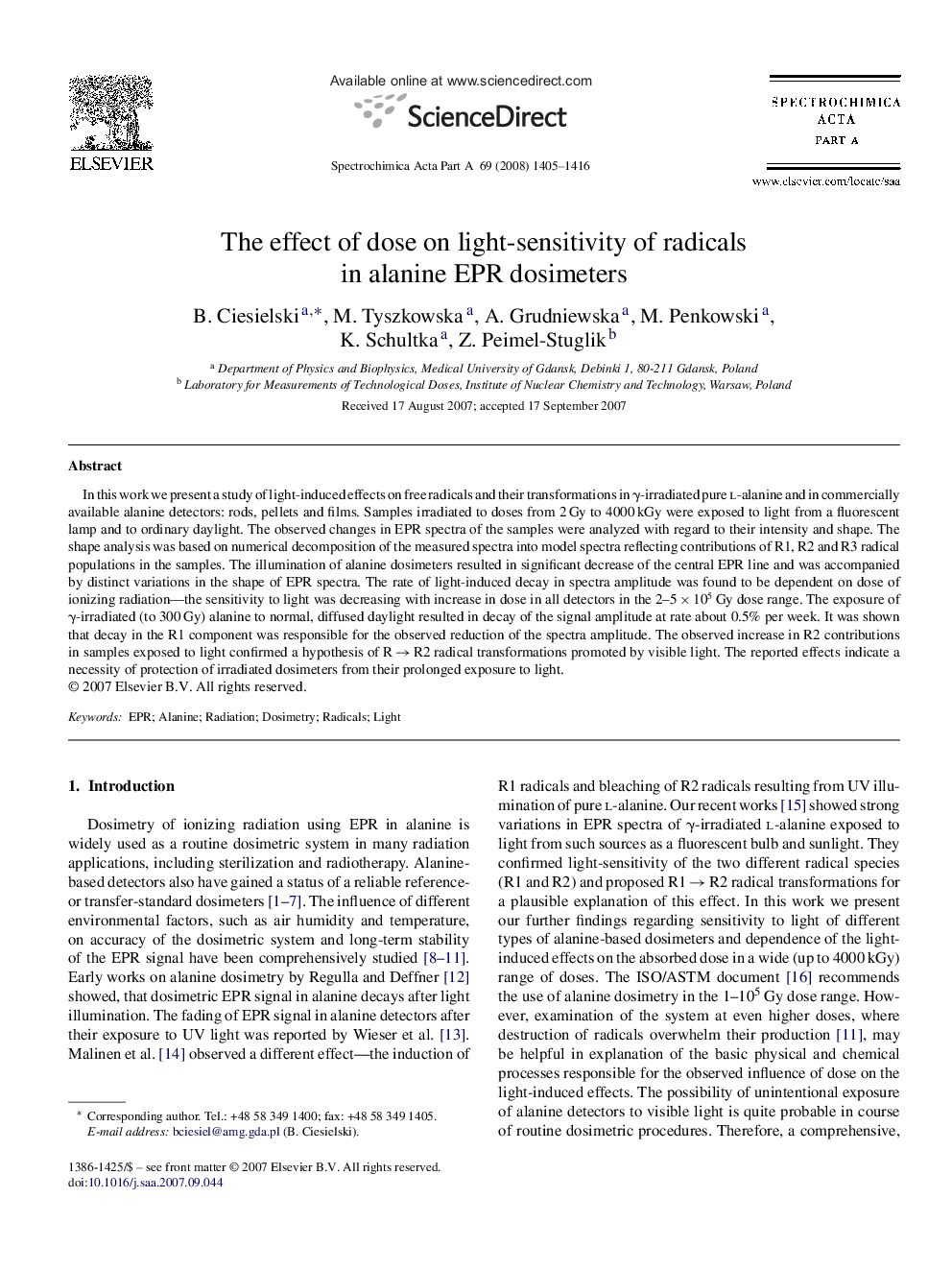| Article ID | Journal | Published Year | Pages | File Type |
|---|---|---|---|---|
| 1238242 | Spectrochimica Acta Part A: Molecular and Biomolecular Spectroscopy | 2008 | 12 Pages |
In this work we present a study of light-induced effects on free radicals and their transformations in γ-irradiated pure l-alanine and in commercially available alanine detectors: rods, pellets and films. Samples irradiated to doses from 2 Gy to 4000 kGy were exposed to light from a fluorescent lamp and to ordinary daylight. The observed changes in EPR spectra of the samples were analyzed with regard to their intensity and shape. The shape analysis was based on numerical decomposition of the measured spectra into model spectra reflecting contributions of R1, R2 and R3 radical populations in the samples. The illumination of alanine dosimeters resulted in significant decrease of the central EPR line and was accompanied by distinct variations in the shape of EPR spectra. The rate of light-induced decay in spectra amplitude was found to be dependent on dose of ionizing radiation—the sensitivity to light was decreasing with increase in dose in all detectors in the 2–5 × 105 Gy dose range. The exposure of γ-irradiated (to 300 Gy) alanine to normal, diffused daylight resulted in decay of the signal amplitude at rate about 0.5% per week. It was shown that decay in the R1 component was responsible for the observed reduction of the spectra amplitude. The observed increase in R2 contributions in samples exposed to light confirmed a hypothesis of R → R2 radical transformations promoted by visible light. The reported effects indicate a necessity of protection of irradiated dosimeters from their prolonged exposure to light.
